Full Educator Guides
CONTEXT SETTING
ADVENTURES
CONTEXT SETTING
ADVENTURES
ACTIVITIES
How to Teach These Units
Dear Family Member,
These space science games were created by PLANETS, a partnership between learning experts and planetary scientists to create fun educational activities using NASA science. PLANETS is funded by NASA and stands for Planetary Learning that Advances the Nexus of Engineering, Technology, and Science. Follow along on your device below or right-click and print the instructions if you prefer a paper copy!
Age Range:
This game is intended for kids ages 8-14 years to play independently or with family members. The bonus engineering activity is intended as a family activity.
Time needed:
About 30 minutes for each activity
Print and gather these materials:
- 1 deck of 70 cards (Decks A-E) (ZIP)
- Space Hazards Card Game Rules and Card Explanation (PDF)
- 1 fold-out game board (PDF)
Follow the directions below:
Get excited! This game is about how NASA keeps astronauts and robots safe in space.
How to use cards:
Each card has its own large icon, red HAZARD, blue MITIGATION, or green CHANCE.
The top row indicates what environments the card applies to.
For example, some cards just have an Earth icon, meaning they are applicable only on Earth, but others have an icon for the Moon, Mars, or an asteroid.
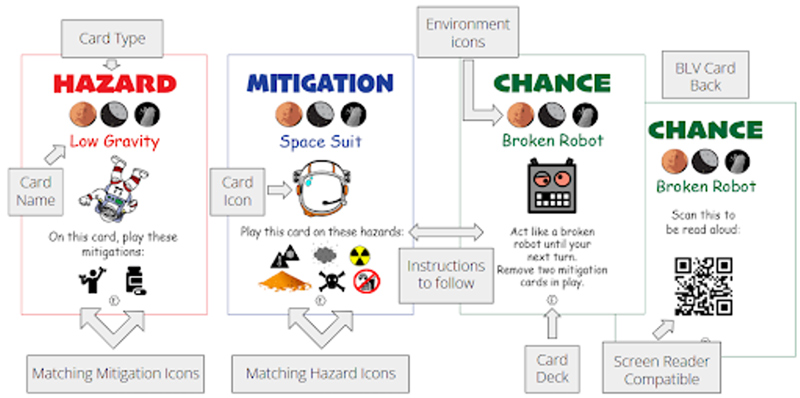
MITIGATION cards and some CHANCE cards have small icons along the bottom that indicate their matches for hazards.
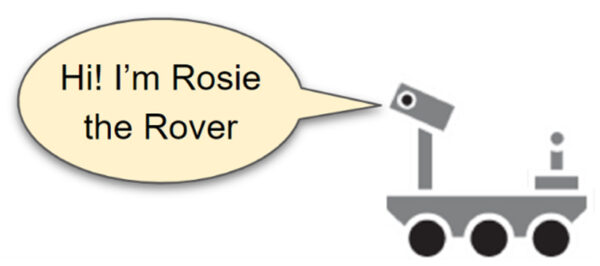
To start, sort the cards into 2 piles:
- 15 everyday cards HAZARDs & SAFETY TIPs (Deck A)
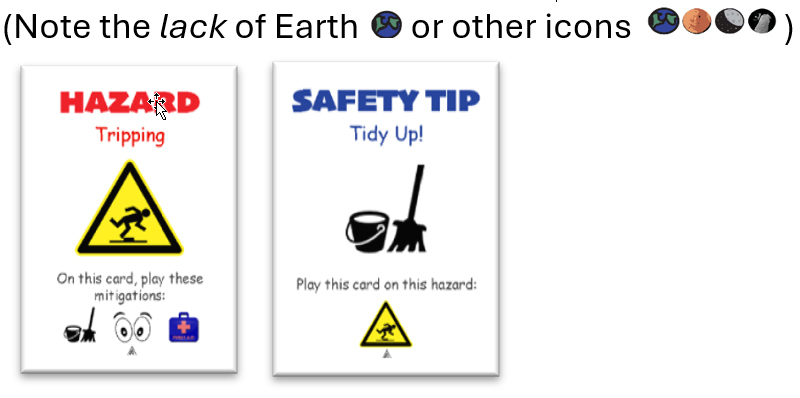
- 47 Earth, Space, or Earth & Space (Decks C, D, & E)
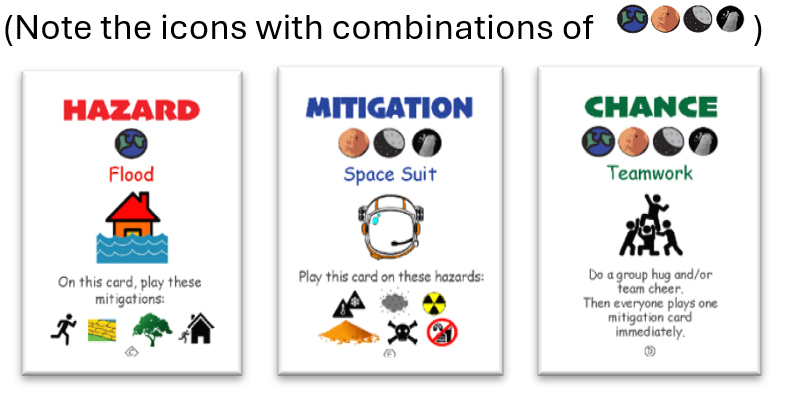
Optional: 8 blank – make up your own! (Deck B – Use these however you want)
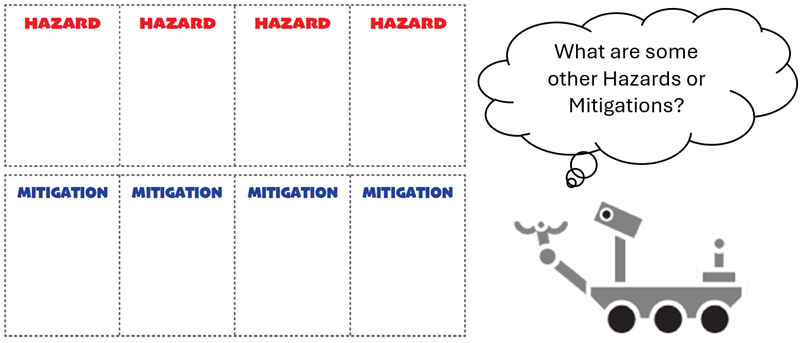
Level 1 – Everyday Hazards 1-2 player Matching Game
What you need:
- 15 everyday HAZARDS cards (Deck A)
Game Play Instructions
- Mix up the cards
- Lay out all 15 cards face-down
- Flip over two at a time
- The goal is to match each SAFETY TIP card to a HAZARD card with the same picture.
- For example, the yellow, triangular icon for the “tripping hazard” can be found at the bottom of the SAFETY TIP card and matched with the Tripping Hazard card:
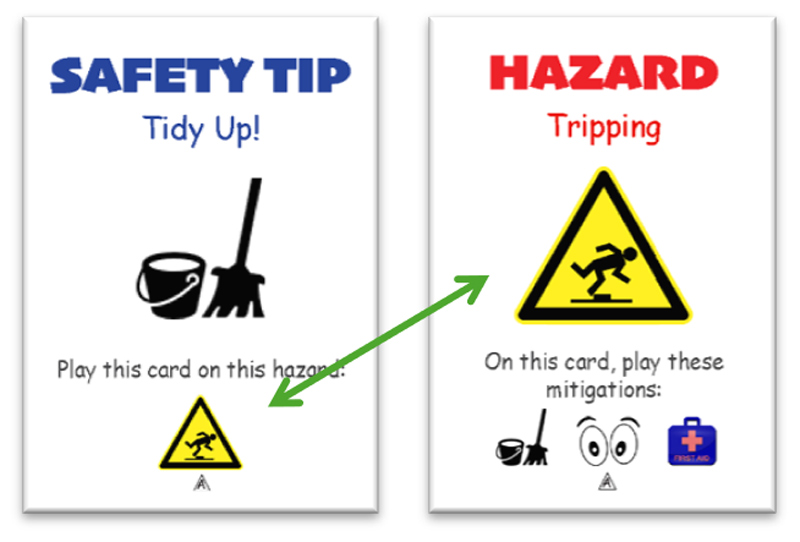
- Place matches face-up off to the side
- When you have found all the HAZARD cards, match a second SAFETY TIP to each hazard until you run out of cards.
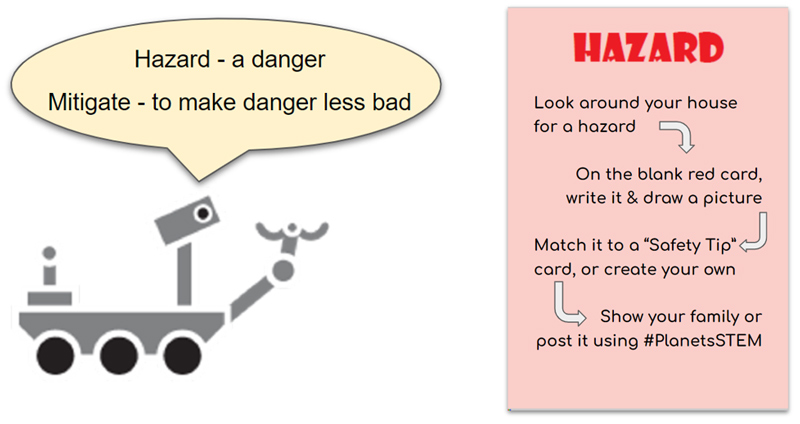
Level 2 – Mitigate Earth & Space Hazards
 1-4 Player Card Game
1-4 Player Card Game
What you need:
- 47 Space HAZARD Cards (Decks C, D, & E):
- (Optional 8 Blank Deck B cards, with your additions)
Game Set Up (1-4 players)
- Sort the cards by color: red HAZARD, blue MITIGATION, and green CHANCE.
- Unfold your game board
- Place 6 HAZARD cards face-up in their places on the game board
- Mix up the rest of the cards and put them face-down in the “Draw Pile”
- Deal each player 2 cards
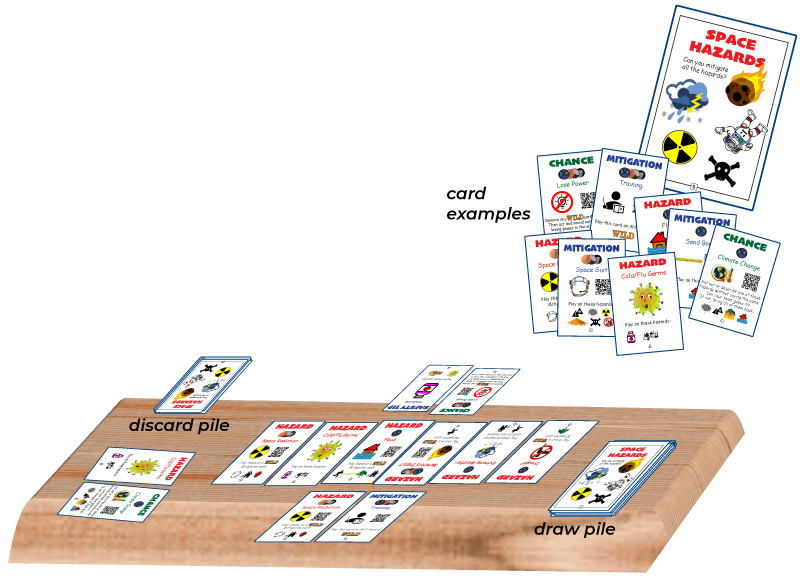
Game play
Goal: Everyone works together to mitigate all HAZARDs
Phase 1: Play a Card
- If you have any CHANCE cards, play 1 and do what it says.
- If you do NOT have any CHANCE cards, play 1 MITIGATION on the game board below any matching
- If you can’t play a card, discard your hand and draw 2 cards.
Phase 2: Draw Cards
- All players draw cards until they have 2 cards in their hands.
- If a player draws a HAZARD card, they play it and draw again.
- If the draw pile runs out, shuffle the discard pile to make a new draw pile.
- If a HAZARD is matched with 2 MITIGATION cards, flip the HAZARD over and put the MITIGATION cards in the discard pile.
- Once all HAZARDs are mitigated (flipped over), everyone wins!

Bonus Level – Want to mitigate a hazard for real? 
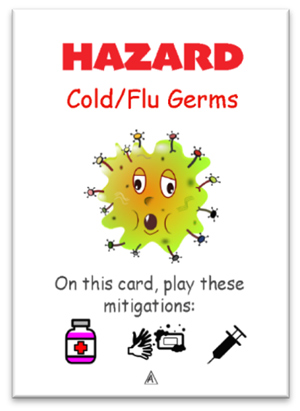 Work together as a family to engineer a solution!
Work together as a family to engineer a solution!
How can we engineer something that would mitigate cold or flu germs for real?
Let’s try a face mask!
What materials do you need? Talk with your family about what to use.
What your mask needs to do:
- Cover your nose and mouth
- Allow you to breathe
- Not use tape, glue, or staples
Engineer it!
- Try drawing your plan on the back of this page (or whatever works for you)
- Assemble your mask and attach the strings
Test
- Shake your head. Does it fall off or fall apart?
- Notice how it feels.
- Does it hurt?
- Does it cover your nose & mouth?
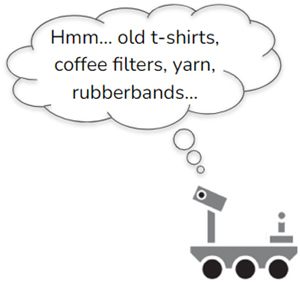 Improve
Improve
- If your mask did not pass the tests, that’s okay!
- Engineers love it when their designs fail, because that’s how they learn and improve!
- Talk to your family about how to improve your mask.


